Despite how simple it may look at first glance, the Korean Air livery (the one unveiled in 1984) is one of the most brilliant – and beautiful – airline liveries of the past 30 years.
I’ve always said that less is more when it comes to airline livery design. This is a perfect example of how to create a stunning color scheme with relatively simple design elements.
The most interesting details of the Korean Air livery
Even if you don’t agree with me that the powder blue Korean Air livery is one of the best ever, stay with me for a second. I’m going to break down each element piece by piece, highlighting all the reasons why I think it’s so great. Here we go:
The titles
The typeface used for the Korean Air titles on the forward section of the fuselage is completely custom. It’s a mix of old-style Korean lettering combined with modern typography standards. It’s bold, extremely easy to read, and uniquely Korean.
More than anything, I appreciate how much time and effort they put into making it a traditionally Korean design element. In comparison, Asiana Airlines (the other South Korean airline) went the easy route and used Helvetica instead.
Going even further, they wasted no opportunity in using the “taegeuk” (yin yang) symbol – the same one found on the flag of South Korea – for the “O”.
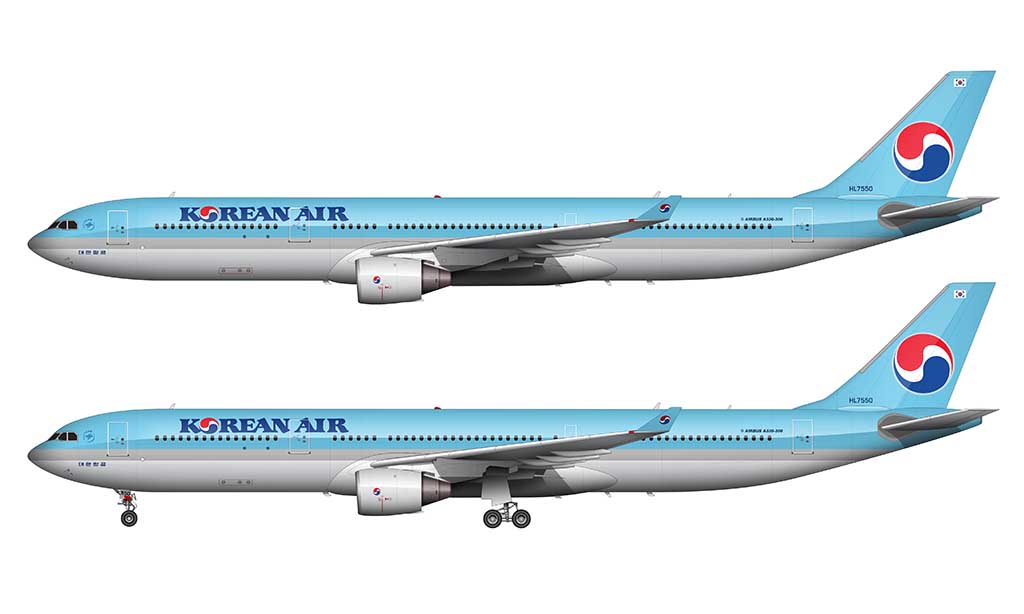
Finally, the titles are very predominantly placed on all aircraft types, which technically classifies them as billboard titles (I guess). Billboard title styles are becoming somewhat dated in the world of airline livery design, but it still works very well for Korean Air in my opinion.
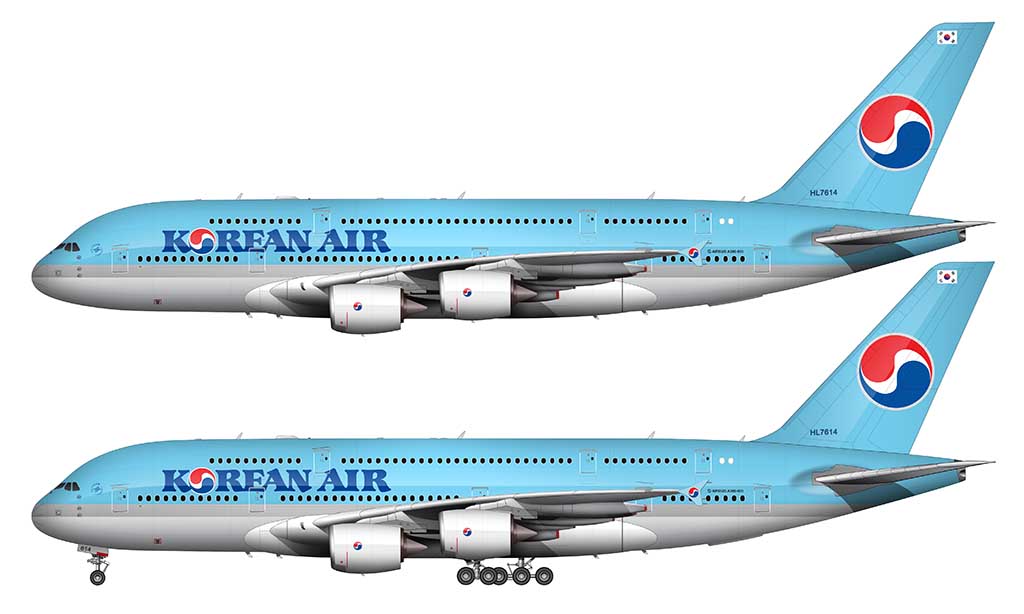
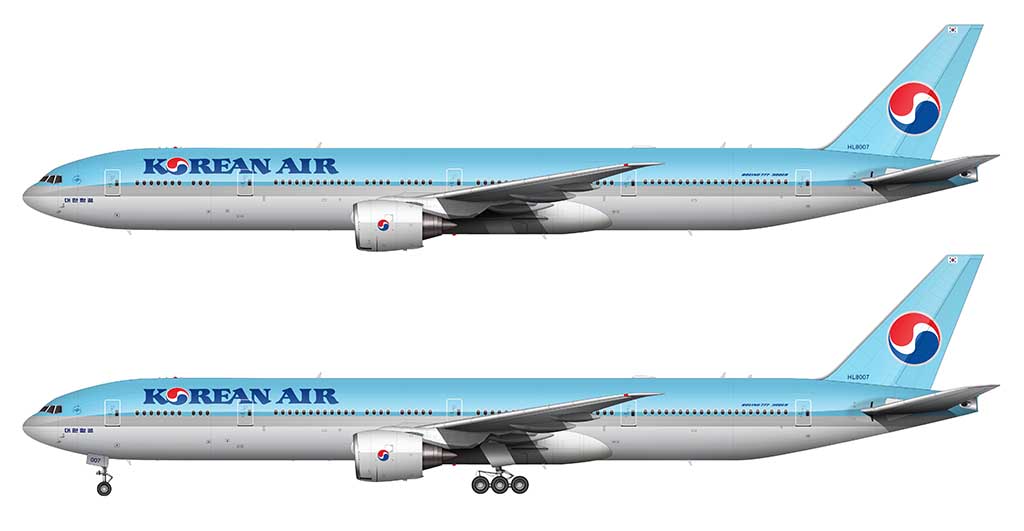
The color palette
To me, the most interesting part about this Korean Air livery is the color palette. Baby blue and silver weren’t exactly the flag colors of South Korea, but they went with it anyway. It was an extremely bold (and daring) choice, but over time, these colors are what defines Korean Air today. I would also argue that they helped to define them as the colors of South Korea as a whole as well.
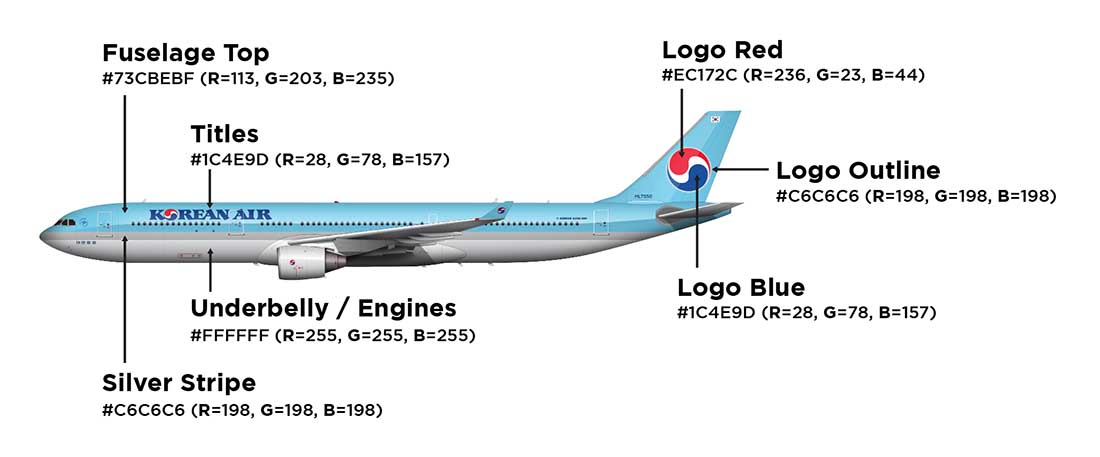
There are four main colors for the Korean air base livery (light blue, dark blue, silver, and white). The logo mark contains four colors (red, blue, white, and silver), but only two are unique:
- Blue: #71CBEB (R=113, G=203, B=235)
- Underbelly / Engines: #FFFFFF (R=255, G=255, B=255)
- Titles: #1C4E9D (R=28, G=78, B=157)
- Silver: #C6C6C6 (R=198, G=198, B=198)
- Logo Red: #EC172C (R=236, G=23, B=44)
- Logo Blue #1C4E9D (R=28, G=78, B=157)
One of the most interesting things about this color palette is the fact that they chose not to use the color red anywhere in the base livery design. Red is a predominant color in the South Korean flag, so I admire the restraint it took to leave it out. If it were me, I wouldn’t have been able to resist adding a few red accents here and there.
The design
There were two major trends in airline livery design when this particular Korean Air livery was unveiled on March 1, 1984:
- Most airlines were moving towards “Euro white” designs (predominantly white liveries).
- Some airlines were just starting to embrace swoopy arcs and curves (as you can see in the Qantas livery and Emirates livery of the time).
The Korean Air designers did neither of those things and stuck with a modern version of the “cheatline” style. Cheatlines were all the rage in the 1970s and 80s, which consisted of linear stripes running down the length of the fuselage.
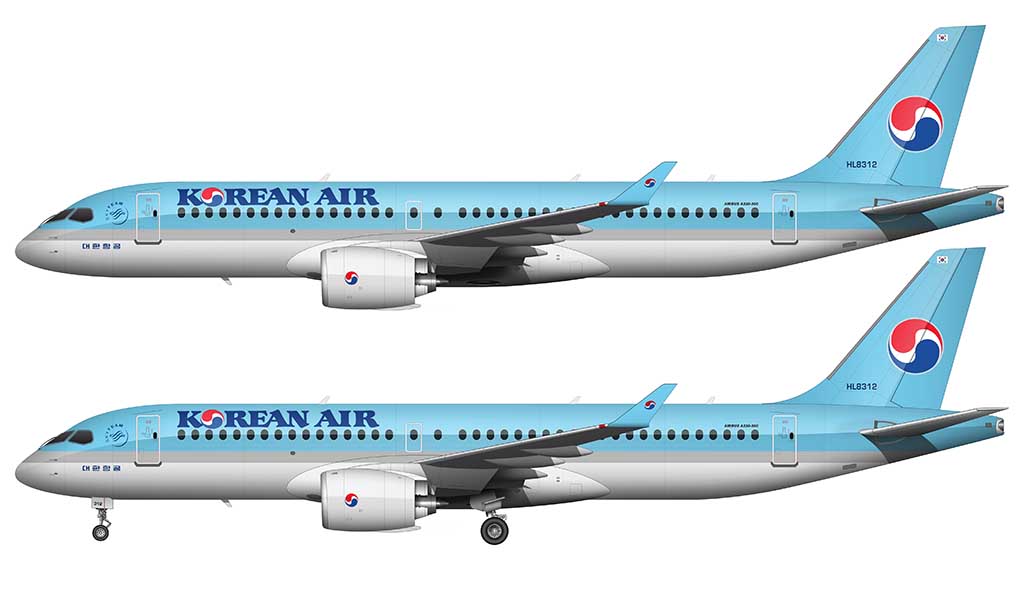
This version of the Korean Air livery is essentially a cheatline style with a modern twist. Instead of thin pinstripes, the horizontal design elements are thick and substantial. It looks a lot like the Qatar Airways livery (which is a compliment), and I consider it to be a beautiful evolution of a very traditional airline livery style.
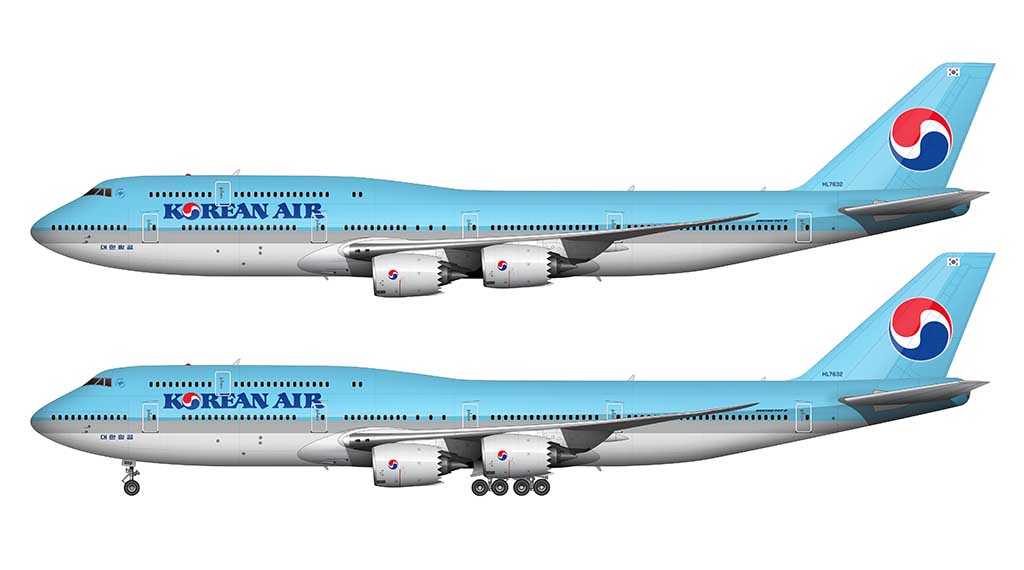
Video demonstration of the livery creation process
One of the best ways to appreciate an airline livery is to illustrate it from scratch. As an aircraft illustrator and livery designer, I couldn’t help but to put together a video showing the process of illustrating a Korean Air A220-300 (an aircraft type many people don’t think of when hearing about Korean Air):
As you can see, the block elements (the silver stripes that run down the length of the fuselage – as well as the light blue top section) were extremely easy to re-create. The most complex part of the livery, by far, was re-creating the Korean Air titles.
Pros and cons of the Korean Air livery
Even though I’ve said nothing but good things about the livery design for Korean Air so far, it’s far from being perfect. This pros and cons list will explain everything that’s good and bad about it (from a designers perspective). This list is completely subjective, and for entertainment purposes only. Don’t take it seriously.
Pros
- The powder blue color palette is uniquely Korean Air. There’s no mistaking this livery for anything else at crowded airports anywhere in the world.
- The retro-style Korean Air typeface is nicely detailed, and pays homage to the rich history of Korea.
- It’s beautifully simple! There are no complex swoops and sweeps anywhere in this livery design, yet it remains one of the most iconic and classy airline color schemes ever created.
Cons
- If I’m being honest, I think there’s a bit of a mismatch between the old world Korean Air typeface and the modern block elements on the rest of the livery.
- Why didn’t they use red accents anywhere else in the design? That could’ve really helped to tie things together in my opinion.
- The problem with using any color other than white for the top of the fuselage is that it will fade over time. There are many aircraft in the Korean Air fleet today that look faded and worn out.


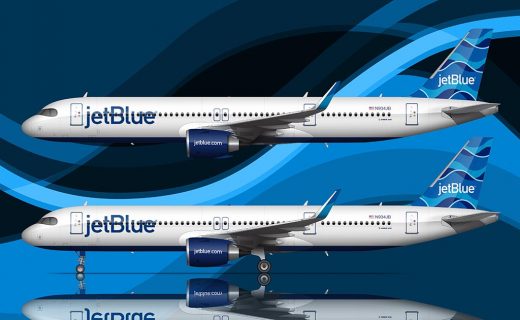
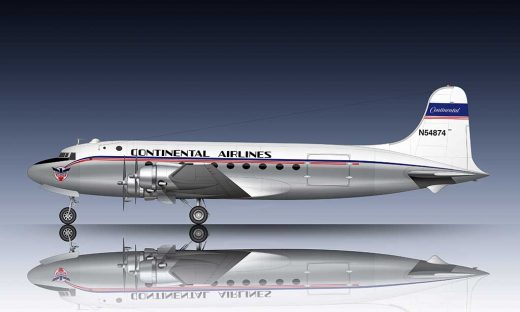
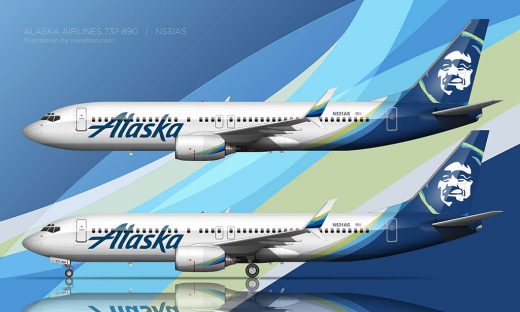
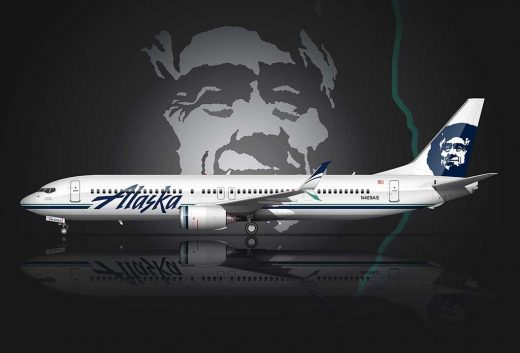
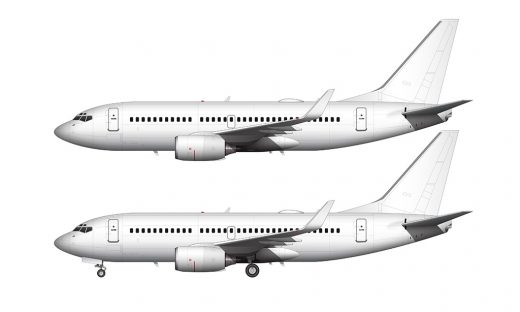
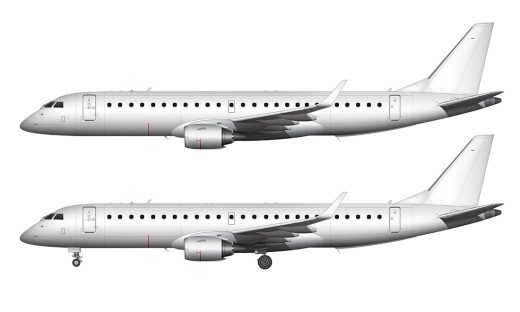
Hey there, two observations:
Are there not three shades of blue in this livery? It appears that there is a second blue between the fuselage top and the silver strip.
Also – I’m sure it’s a typo where you mention that “the horizontal design elements are sick and substantial”
🙂
I guess I’m not seeing the third shade of blue. Isn’t it just the sky blue color (upper half of the aircraft) and the blue in the logo?
And yes, that is a typo, but technically, it is pretty sick. lol
There’s an error (and extra character) in the hex codes for Blue: #73CBEBF (R=113, G=203, B=235).
Going by the decimal numbers, the hex codes would be 71CBEB.
Shit. 🙂 Thanks for letting me know – I’ve updated the body text, but I’ll make a note to fix the image later.
What about the livery prior to 1984 color schemes?
I’ll add those eventually – I just wanted to cover the modern stuff first.